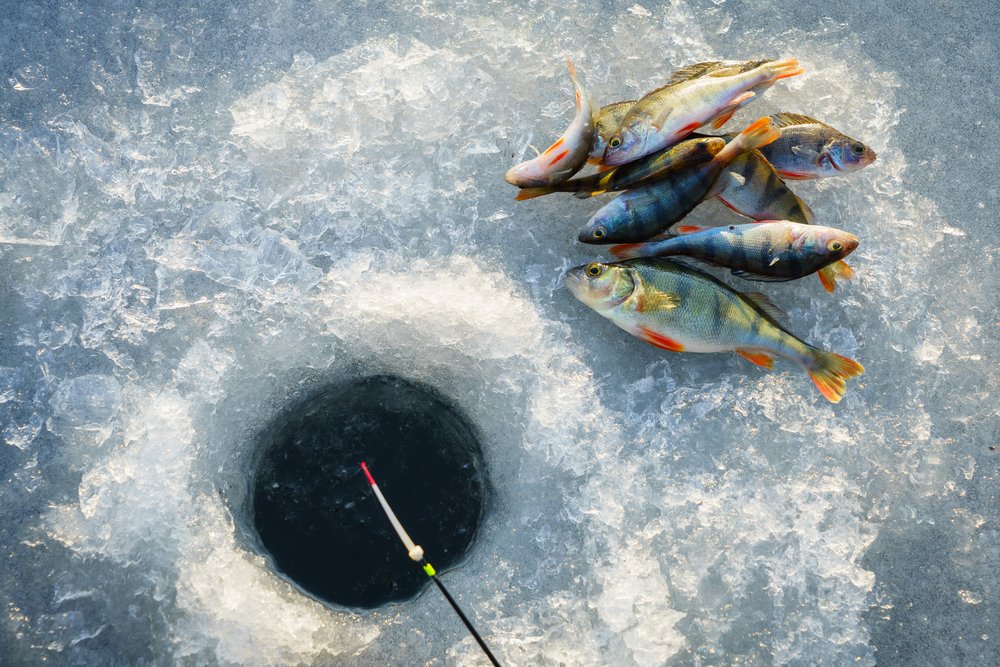Winter ice fishing tips
Tips for success on hard water
Check the ice thickness. The state’s Department of Natural Resources usually updates the anglers on the recommended thickness of ice. In general, lakes are safer during the early winter months than rivers and streams.
Don’t forget to check the weather. The best way to make sure you’re extra safe is to check the weather while planning your trip (if possible), a few days before, and right before you hit the ice.
Don’t fish alone. If you can, head out with your fellow anglers, friends, or family. If you’re going solo, consider telling someone you trust where you’re going and when you expect to come back.
Ice Fishing for Panfish
Bluegill patterns and depths will vary throughout the winter. However, bluegill generally feed on small minnows, insects and larvae, so mimic them with your bait presentations. At early ice you will find bluegills in shallower bays with healthy amounts of vegetation. Look for bays with a maximum depth of 15-20 feet, and work from the deepest point toward the edges of vegetation. Bluegills will push out to the deeper basin in mid-winter when vegetation dies off and oxygen levels are depleted. You’ll find gills in the 15-35 foot range this time of year. Look for areas with flat, semi-soft bottoms. Flatter, semi-soft bottom areas are home to insect larvae that bluegills love to eat this time of year. Late ice will bring bluegills back to the vegetation as they make their way into shallow bays for the spring spawn. Target the mouths of bays, points and inlets as they travel inward.
Tip Up Fishing for Pike
When tip-up fishing for pike, there are several things you can do to ensure success. The main thing is to spread out and cover a lot of water. The main bait for tip-ups are suckers. The next best thing to do is to place your tip ups in locations that are likely to hold pike. Weed lines and large clumps of vegetation are key hang outs for pike. Healthy vegetation holds bait fish which lure in pike. Target the edges of weed lines, around denser areas, as well as transitions from weeds to deeper bottoms. Shorelines that sport a change in depth, as well as the edges of shallow flats are great places to zero in on. Once you find your spot, the last thing to do is to place each tip up at a different depth. Pike are most often found in 3-15 ft where vegetation still gets light. Space your tip ups out across a transition in depth to cover 5, 10 and 15 ft depths. The main takeaway is to spread out and cover various depths across areas that hold vegetation.
Please practice catch and release, when possible, to keep our lake a healthy and productive fishery!

